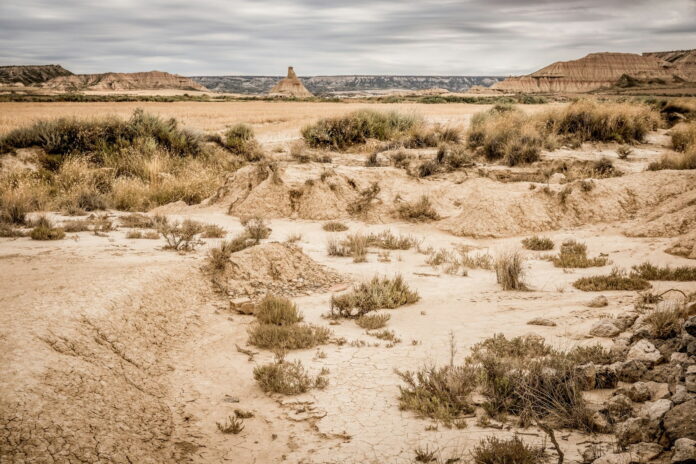Desertification stands as one of the most pressing environmental challenges of our time, affecting the lives of millions of people by degrading land to the point where it can no longer support life. As fertile land turns to desert, the consequences are severe, including food shortages, poverty, and forced migration. However, with a combination of modern science and traditional knowledge, there are eco-friendly solutions at hand that can combat, and even reverse, the tide of desertification.
Combating Desertification
Desertification, a form of land degradation in drylands, is caused by various factors including climate change and human activities such as deforestation, overgrazing, and unsustainable agricultural practices. To combat desertification, a shift towards more sustainable practices is imperative. One promising strategy is the integration of agroforestry, which combines agricultural and forestry techniques to create more diverse, productive, and sustainable land-use systems. By planting trees alongside crops and livestock, agroforestry can help stabilize the soil, increase biodiversity, and create microclimates that enhance soil moisture.
Another key approach is the conservation of water through improved irrigation methods and the use of drought-resistant crops. Techniques such as drip irrigation and rainwater harvesting can maximize water efficiency, reducing the stress on arid lands. In conjunction with these methods, policies and incentives that encourage sustainable land use and protect natural vegetation are crucial. Education and cooperation among local communities, governments, and international organizations can foster a collective effort towards the prevention of land misuse and the implementation of best practices for land management.
Furthermore, combating desertification involves the restoration of degraded land. Techniques such as reforestation and the reclamation of eroded areas can help to revive the soil’s fertility. Initiatives like the Great Green Wall in Africa, which aims to grow an 8,000-kilometer belt of trees across the continent, demonstrate the potential of large-scale restoration projects to combat desertification by providing a barrier against wind erosion, capturing carbon, and creating sustainable ecosystems.
Sustainable Land Management
Sustainable Land Management (SLM) refers to the use of land resources, including soils, water, animals, and plants, in a way that does not compromise their quality or potential for future generations. SLM practices can help maintain the balance of ecosystems, preserve biodiversity, and ensure the resilience of the land against environmental pressures. One of the key SLM practices is soil conservation, which includes measures like contour plowing, terracing, and the use of cover crops to prevent soil erosion and maintain soil fertility.
Another aspect of SLM involves adaptive grazing management. By adjusting livestock numbers to the carrying capacity of the land and rotating grazing areas, the vegetation is allowed to regenerate, and the soil structure remains intact. This can also be complemented by the use of organic fertilizers and the promotion of biodiversity through the planting of a variety of crops, which can reduce the occurrence of pests and diseases while maintaining a healthy soil ecosystem.
Community-based management and the involvement of local populations in decision-making processes are also integral to the success of SLM. By empowering local communities to take ownership of land management, practices are more likely to be maintained and adapted to specific local conditions. This bottom-up approach helps to ensure that SLM strategies are culturally appropriate, economically viable, and environmentally sound, leading to long-term sustainability and the prevention of further land degradation.
Reversing Land Degradation
Reversing land degradation is a challenging yet achievable goal, requiring a long-term commitment and a holistic approach to land management. One of the most effective methods is the practice of restoration ecology, which involves the rehabilitation of degraded ecosystems through active human intervention and natural processes. By reintroducing native plant species, restoring wetlands, and conducting controlled burns to manage excessive plant growth, ecosystems can be brought back to a state of balance and productivity.
Another critical component in reversing land degradation is the remediation of contaminated soils, which may involve phytoremediation (using plants to absorb contaminants), soil washing, or the introduction of beneficial microorganisms that can break down pollutants. These techniques can help to detoxify and restore soils that have been damaged by industrial activities or the improper disposal of waste.
Investing in research and development is also essential for reversing land degradation. Innovative solutions such as the development of new crop varieties that are tolerant to harsh conditions, the application of precision agriculture to optimize resource use, and the use of technology for real-time land monitoring can all contribute to the recovery of degraded lands. By combining traditional knowledge with modern science, and fostering collaboration between various stakeholders, the reversal of land degradation can pave the way for a more sustainable and secure future for all.
The battle against desertification is a multifaceted one, demanding a blend of sustainable land management practices, community engagement, policy support, and innovative technologies. By integrating agroforestry, water conservation, soil conservation, and adaptive grazing management, we can combat desertification and promote the resilience of ecosystems. Reversing land degradation through restoration ecology, soil remediation, and investment in research can restore ecological balance and productivity. As we continue to face the challenges posed by environmental degradation, these eco-friendly solutions offer a beacon of hope for the health and sustainability of our planet’s land resources, ensuring a livable world for future generations.
